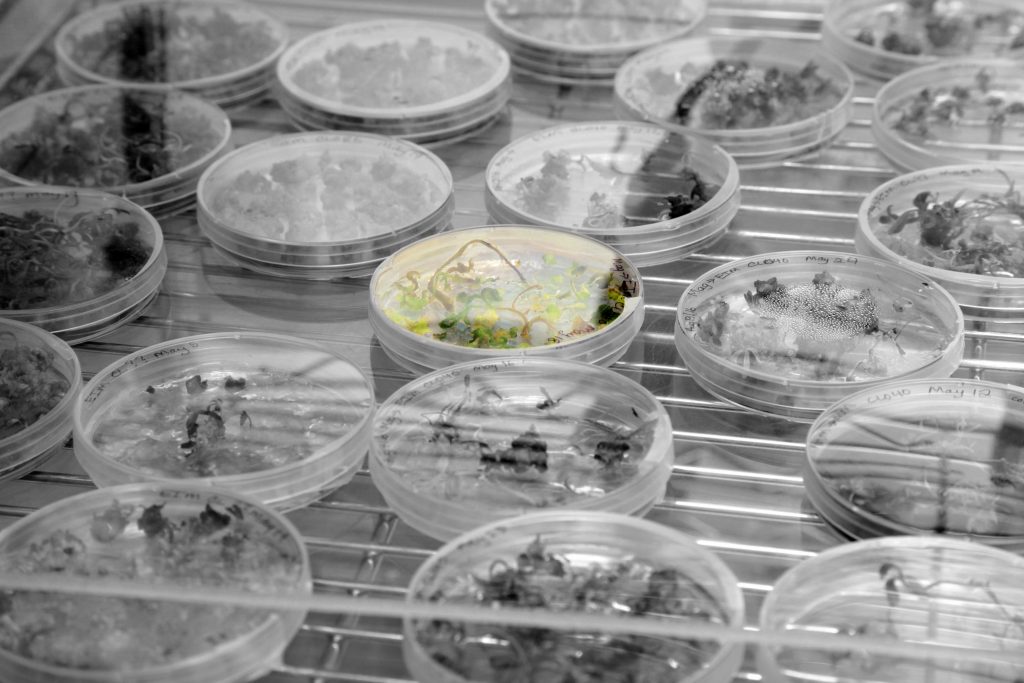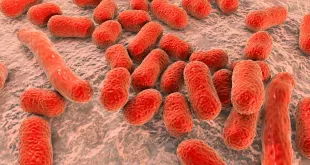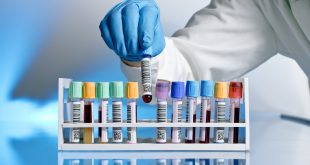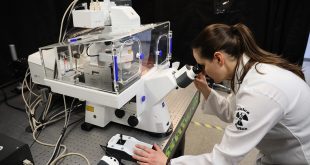By Hermione Wilson
Researchers at the Richardson Centre for Functional Foods and Nutraceuticals (RCFFN) in Winnipeg, are cooking up a storm. Seventy-five per cent of the work done at the RCFFN is dedicated to product development, says Analytical Lab Coordinator, Mark Miller-Williams. The other 25 per cent, he says, is routine lab analysis work, which involves food safety, analyzing taste profiles and researching new functional food sources. The 60,000-sq. ft. facility is divided into pilot plants, a milling facility, a secondary processing plant, and two clinical areas – one for long-term feeding trials and the other for shorter term “feed and bleed” trials.
The RCFFN makes its home in SmartPark Research and Technology Park at the University of Manitoba and its mandate, according to the mission statement, is to “lead functional food and nutraceutical research for the improvement of health and nutrition, to support the development of an economically viable functional food industry in Manitoba and western Canada.”
“The University of Manitoba set up the RCFFN in 2005 to act as a one-stop shop in order to engage with industry… and solve common problems,” says Peter Jones, Director of RCFFN and Professor of Food Science at the University of Manitoba.
The Lab
The RCFFN’s analytical laboratory is equipped with a Vitros 350 chemistry analyzer, a machine Miller-Williams says one might find in a hospital blood chemistry lab. A Quattro Micro Triple Quadrupole mass spectrometer from Waters Corporation, which is hooked up to a Waters Acquity UPLC System, specializes in targeted analytes, metabolites that are small molecules, peptides from complex matrices, serum, tissue, cell cultures and other biological forces. A GC-FID (Gas Chromatography – Flame Ionisation Detector) from Bruker does quantitative analysis of known compounds and is especially effective in analyzing fatty acids. The lab also possesses an Agilent 689ON network gas chromatograph which Miller-Williams says produces excellent results for a number of research applications, as well as food safety, pesticide determination and chemical analysis.
The RCFFN lab also recently acquired a QuickPlex SQ 120 electrochemiluminesence immunoassay plate reader from Meso Scale Discovery that is able to perform a number of different tests. With 10 spots per well and the capacity for 10 different assays in each, Miller-Williams says the QuickPlex gives researchers the ability to design their own assays for each well.
“What we have in our analytic lab is the capacity to determine the good, the bad, and the ugly in food,” Jones says. “We’re always interested in functional components that make up the food we eat. So the GC-FID Mark [mentioned] would be to do something such as look at a fish oil to assess how much omega-3 fatty acids might be in it, or how much of a polyphenol might be in some kind of a plant matrix. We have a lot of equipment that measures both the good things as well as possibly some of the deleterious ingredients in foods.”
The sophisticated equipment in the lab allows RCFFN researchers to do in-depth analysis of food products, in the case of food safety applications. The more sophisticated approaches, involving machines like the GC-FID, and the high performance liquid chromatography (HPLCs), and ultra performance liquid chromatography systems (UPLCs), can be used to measure “parts per million, in some cases, or even parts per 10 million or parts per billion,” Jones says. “We can go down to picogram levels with some of this equipment when we’re looking for toxic agents.”
Not all the analysis in the lab is about looking for dangerous toxins in food, or analyzing its health benefits, Jones says. The RCFFN boasts an Alpha MOS electronic nose and tongue that can tell researchers whether the taste profile of a food product will be negatively or positively perceived by humans. “It’s basically a fingerprint mass spec that gives you different bandwidths,” Jones explains. When it comes to food products, he says, taste is important, and that is something scientists often forget.
“Part of the problem in our domain is that food scientists are so keen on making foods that are healthy and functional, that they forget about the fact that taste is the most important constituent,” Jones says. “When the cardboard box that the food is supplied in tastes better than the food itself, no one’s going to buy the stuff, so our lab has got to be sensitive to that.”
The Research
Along with the day to day business of working with food companies to test and develop commercial products, the RCFFN puts its hi-tech equipment to work on various research projects. The centre collaborates with big companies and other research centres around the world in the quest to learn more about the health benefits of the foods we eat.
“We have [ongoing clinical] trials with Unilever, with Pepsico, and then we go right down to what we affectionately call mom-and-pop shops,” Jones says. “We essentially become the sandbox in which they can play without them having to construct research laboratory facilities of their own.”
Some of the projects RCFFN has been involved with include research that demonstrated the efficacy of plant sterol yogurts and margarines, and the discovery of a source of fibre in fava beans that reduces cholesterol absorption, as well as blood sugar uptake and insulin levels. The centre has also conducted a topical experiment to test the ability of an algae extract to reduce psoriasis. “Right now we’re looking at a proposal with a company to investigate whether an algae-derived mixture would be effective in reducing the symptoms of inflammatory bowel disease,” Jones says.
In addition to its analytical capabilities, the RCFFN facility has growth chambers in its basement where researchers can cultivate plants with certain traits and observe them as they grow under different environmental conditions, Jones says.
“Sometimes companies come to us with genetically modified plants, so we grow them up. We then use our lab equipment to find out what those plants will be growing up [to be],” he says. Recently RCFFN ran an experiment where researchers turned up the heat on wheat plants to simulate what might happen with global warming, to see which varieties were susceptible or resistant to heat.
“We found that some levels of omega-3s were reduced in plants exposed to heat,” Jones says. “If we wanted, we could take a look at whether the bioactive materials found in the plants at different heat levels were working as well in humans.”
The Work
“There are quite a lot of projects revolving around the centre and it keeps everybody pretty busy,” Miller-Williams says. “There’s no shortage of things to do.”
He’s not kidding. There are currently eight companies working out of RCFFN and eight ongoing clinical trials. Jones attributes the efficiency of the centre to staff like Miller-Williams who are “essentially masters of all trades and jacks of none.”
“This equipment isn’t getting any younger and it’s extremely complicated,” he says. “It’s pretty tough actually to be able to identify what the problems are with this equipment that is approaching 10 years of age or older.”
Between keeping complicated lab equipment in working order and running a number of research and analytical projects, the researchers at RCFFN are no doubt kept on their toes. “It’s an interesting, challenging atmosphere to work in,” says Miller-Williams.
 BioLab Business Magazine Together, we reach farther into the Canadian Science community
BioLab Business Magazine Together, we reach farther into the Canadian Science community






